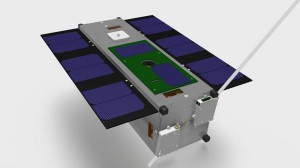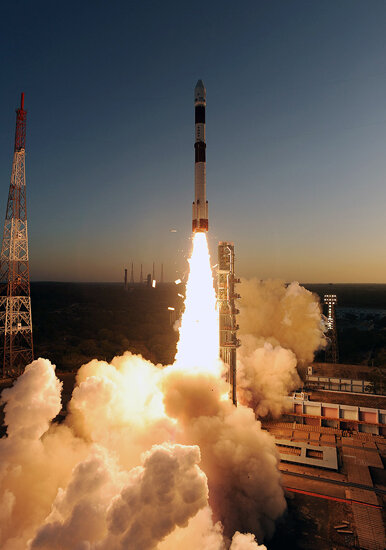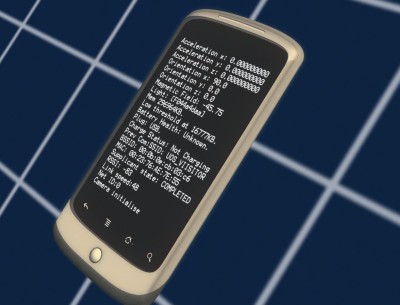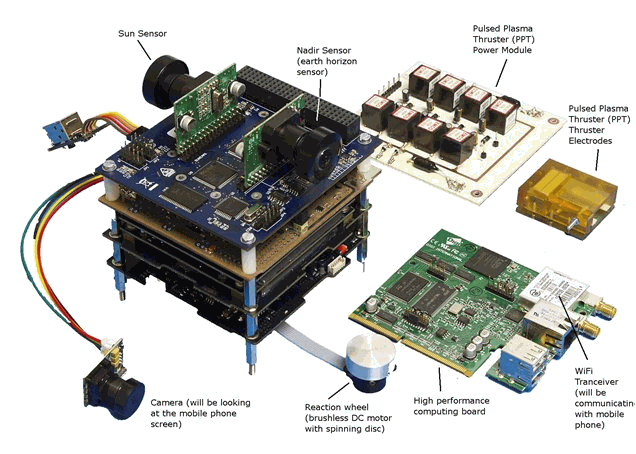STRaND-1
(Surrey Training, Research and Nanosatellite Demonstration)
Mission
 The STRaND programme is intended to be a long-term arrangement between SSTL and the SSC, with STRaND-1 the first of a long line of STRaND nanosatellites. It builds upon a similar programme, a decade ago, which resulted in the highly successful SNAP-1 nanosatellite mission, launched in 2000. STRaND-1 is using a three Cubesat (3U) module structure to provide a quick and cost-effective framework to test the applications of smartphone technology in space.
The STRaND programme is intended to be a long-term arrangement between SSTL and the SSC, with STRaND-1 the first of a long line of STRaND nanosatellites. It builds upon a similar programme, a decade ago, which resulted in the highly successful SNAP-1 nanosatellite mission, launched in 2000. STRaND-1 is using a three Cubesat (3U) module structure to provide a quick and cost-effective framework to test the applications of smartphone technology in space.
Whilst the phone gets all of the media attention, STRaND-1 is packed with a multitude of experimental systems that will allow it to do all sorts of exciting things when in orbit. STRaND-1 will have no less than 4 means of manoeuvring. It is equipped with magnetorquers and reaction wheels as well as some brand new propulsion systems: the WARP DRiVE and 8 Pulsed Plasma Thrusters. The Cubesat will also carry a total of four cameras: two to help orientate the satellite (the sun sensor and nadir sensor seen in the image below), the phone camera that will shoot photos of Earth and a final one (also seen in the image) that will show us what the phone is doing in orbit.
 At the heart of STRaND-1 is a Google Nexus One smartphone with an Android operating system. Smartphones contain highly advanced technologies and incorporate several key features that are integral to a satellite – such as cameras, radio links, accelerometers and high performance computer processors – almost everything a spacecraft needs except the solar panels and propulsion. During the first phase of the mission, STRaND-1 will use a number of experimental ‘Apps’ to collect data whilst a new high-speed linux-based CubeSat computer developed by SSC takes care of the satellite. During phase two, the STRaND-1 team plan to switch the satellite’s in-orbit operations to the smartphone, thereby testing the capabilities of a number of standard smartphone components for a space environment. The satellite will be commissioned and operated from the Surrey Space Centre’s ground station at the University of Surrey.
At the heart of STRaND-1 is a Google Nexus One smartphone with an Android operating system. Smartphones contain highly advanced technologies and incorporate several key features that are integral to a satellite – such as cameras, radio links, accelerometers and high performance computer processors – almost everything a spacecraft needs except the solar panels and propulsion. During the first phase of the mission, STRaND-1 will use a number of experimental ‘Apps’ to collect data whilst a new high-speed linux-based CubeSat computer developed by SSC takes care of the satellite. During phase two, the STRaND-1 team plan to switch the satellite’s in-orbit operations to the smartphone, thereby testing the capabilities of a number of standard smartphone components for a space environment. The satellite will be commissioned and operated from the Surrey Space Centre’s ground station at the University of Surrey.

Being the first smartphone satellite in orbit is just one of many ‘firsts’ that STRaND-1 is hoping to achieve. It will also fly innovative new technologies such as a ‘WARP DRiVE’ (Water Alcohol Resistojet Propulsion Deorbit Re-entry Velocity Experiment) and electric Pulsed Plasma Thrusters (PPTs); both ‘firsts’ to fly on a nanosatellite. It is also flying a 3D printed part – believed to be the first to fly in space!

Orbital parameters
Name STRAND 1 NORAD 39090 COSPAR designation 2013-009-E Inclination 98.635 RA of A. Node 245.002 Eccentricity 0.0008367 Argument of Perigee 254.550 Revs per day 14.34277201 Period 1h 40m 23s (100.38 min) Semi-major axis 7 156 km Perigee x Apogee 771 x 783 km BStar (drag term) 0.000018925 1/ER Mean anomaly 105.476
Downlink
437.568 MHz 9k6 FSK AX.25 (later 19k2)
Call
???
Status
Active. On July 23, 2013 at 1634 UTC Mike Rupprecht DK3WN received the signals from STRaND-1 again. Launched 25-feb-2013 at 12:30 UTC and active. Strong signals received on launch day. Not active, last signal received on 31 March 2013.
Provisional TLE data:
STRaND-1 1 44871U 58056A 13056.56369708 .00000000 00000-0 +10239-3 0 334 2 44871 98.7067 247.0547 0006435 302.9022 57.1261 14.35120889200890
Telemetry data:

Via this link you can download a Excel sheet with the telemetry information.
How to decode the telemetry data? After some experimenting, I found the following way to decode the telemetry data:
- Record a pass using SDR# and a FUNcube Dongle and save the IQ wav file so you can work with it after the pass.
- Configure AGW Packet Engine or MixW as a 9600 baud modem using your audio mixer as input. If you don’t have an audio mixer, use audio VAC to route the received audio to the AGW or MixW audio input.
- When the modem software is running use (AGW) Online Kiss from DK3WN to connect to the packet engine via Winsock or via a virtual serial port and decode the telemetry.
- Open the IQ wav file within SDR# and playback the recorded file and tune to the correct receive frequency, now you can see decoded data within Kiss-Online.
When successfully decoded the data you can send it to C P Bridges <C.P.Bridges [at] surrey.ac.uk> preferably in .kss format.
[PE0SAT Thanks Amsat-UK, STRaND-1 team and DK3WN for above the information]
Homepage and other references:
SSTL STRaND-nanosatellite
The STRaND-1 Story
STRaND-1 information at Amsat-UK
Soundcard Modem Setup
NanoSats on Facebook
STRaND-1 program
